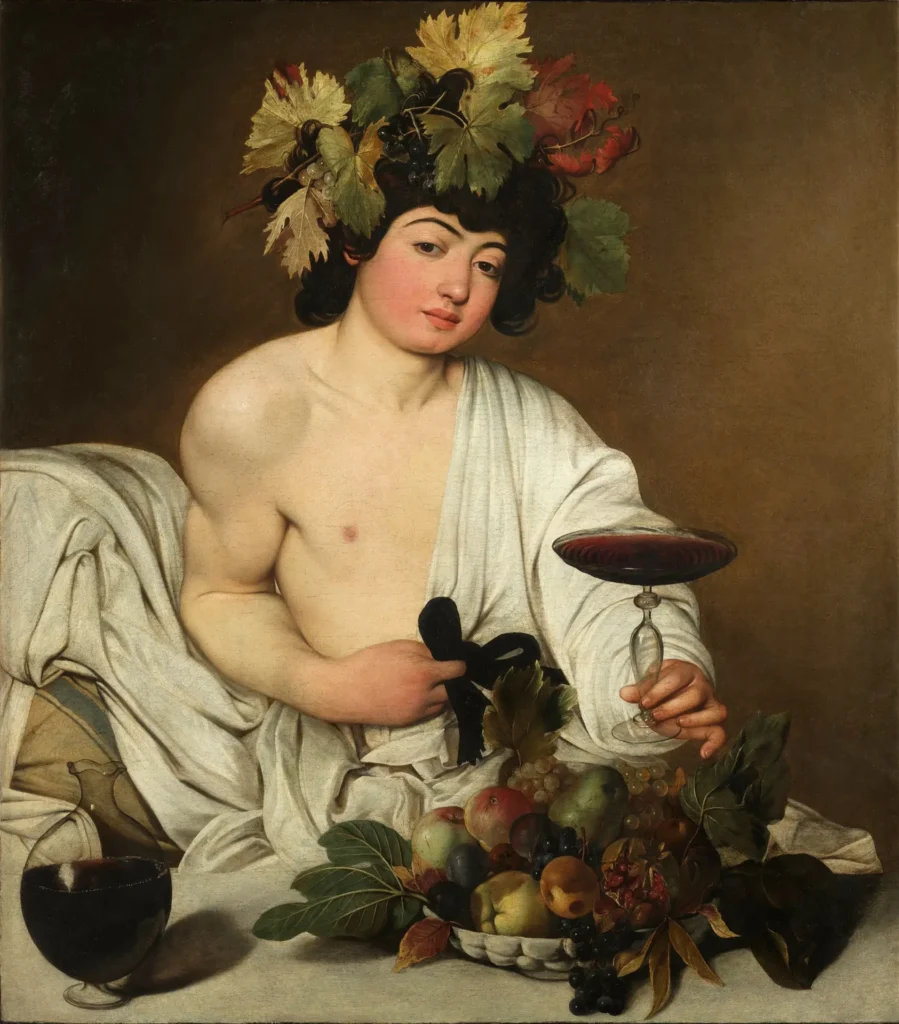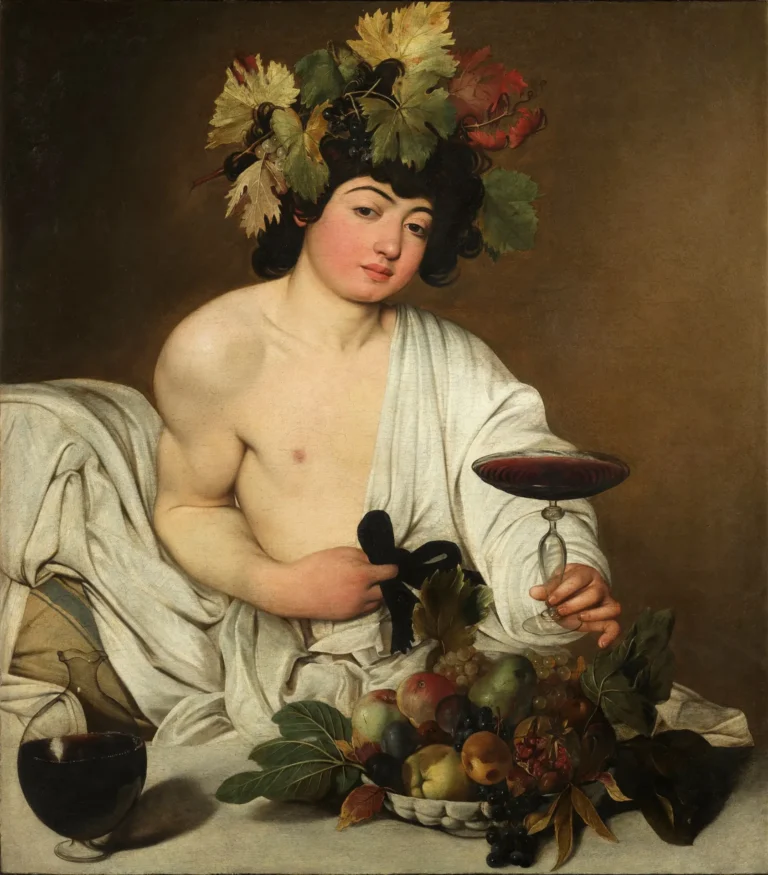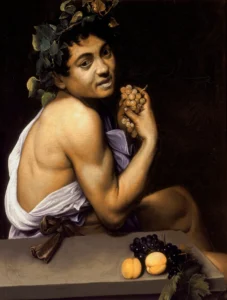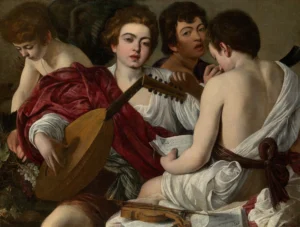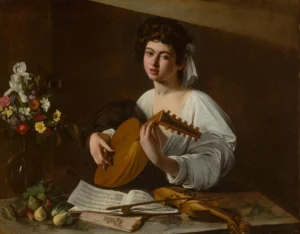Bacchus (circa 1596)
Caravaggio's Bacchus presents the Roman god of wine in an uncharacteristically human form, reclining amidst grapes and vine leaves. Painted in the late 16th century, this seminal work showcases the artist's extraordinary skill in chiaroscuro, contrasting light and shadow to enhance the figure's realism. Bacchus's flushed skin, unfocused gaze, and lush surroundings create a compelling atmosphere of indulgence and invitation. Notably, the painting embodies themes of mortality and temptation, with symbolic elements that provoke deeper reflection on pleasure and decay.
1596 - 1597
About the Artwork
Commissioned for a private collection, Bacchus reflects Caravaggio's innovative approach to depicting classical themes. Unlike traditional portrayals, the artist presents Bacchus as a relatable young man, embodying both divine and mortal characteristics. This work resonates with Baroque ideals, emphasizing the interplay of light and shadow, while successfully merging mythology with the vulnerabilities of human experience. The painting's discovery in the Uffizi Gallery's storerooms in 1913 brought renewed attention to Caravaggio's genius, reaffirming his role as a pivotal figure in the evolution of Western art.
Did You Know
Caravaggio’s portrayal of Bacchus incorporates an unprecedented level of realism, with a flushed complexion capturing the effects of intoxication, differing greatly from idealized depictions of deities common in Renaissance art.
The fruit basket includes a pomegranate and a rotten apple, symbolizing the fleeting nature of pleasure and life, embodying themes of futility and indulgence often found in Vanitas paintings.
Bacchus was rediscovered in 1913 in the Uffizi Gallery’s storerooms, leading to its reattribution to Caravaggio by renowned art historian Roberto Longhi, highlighting its significance in understanding Baroque art.




